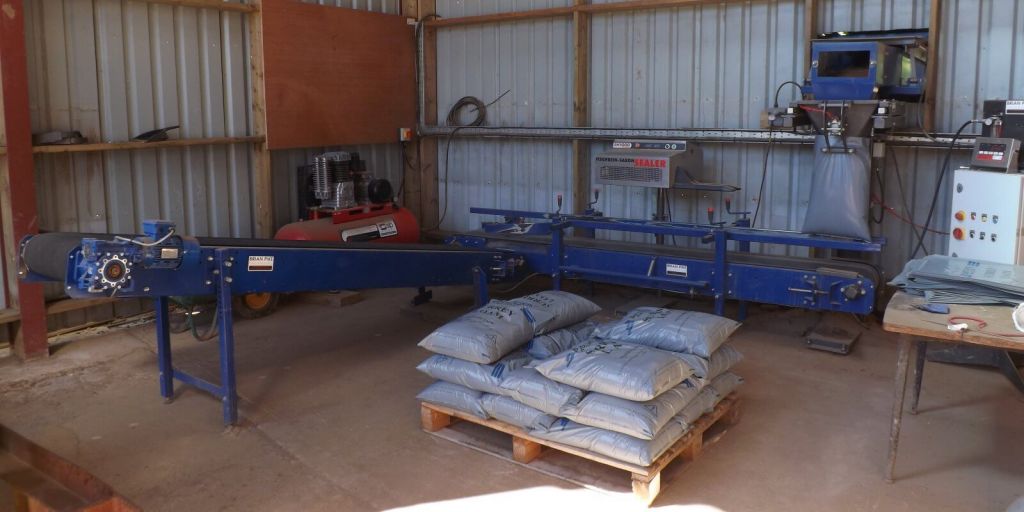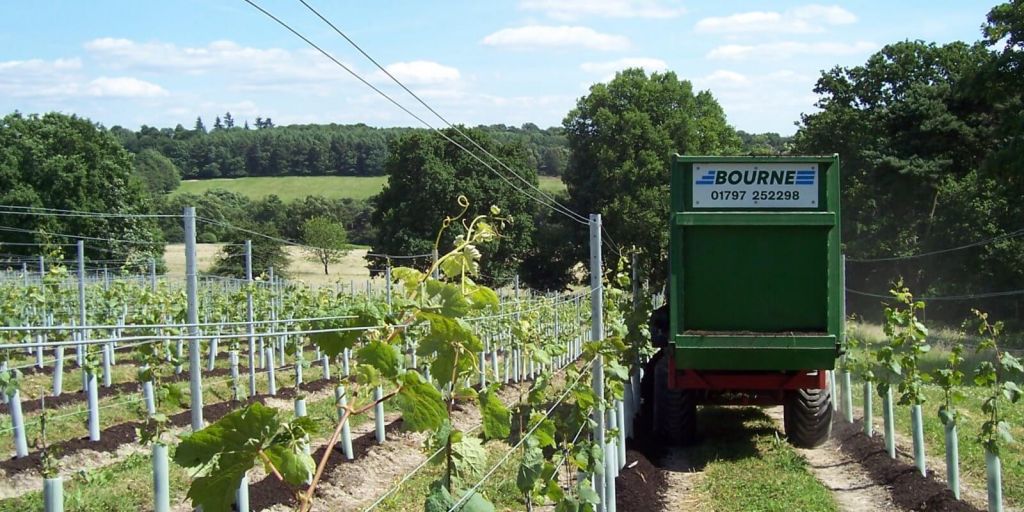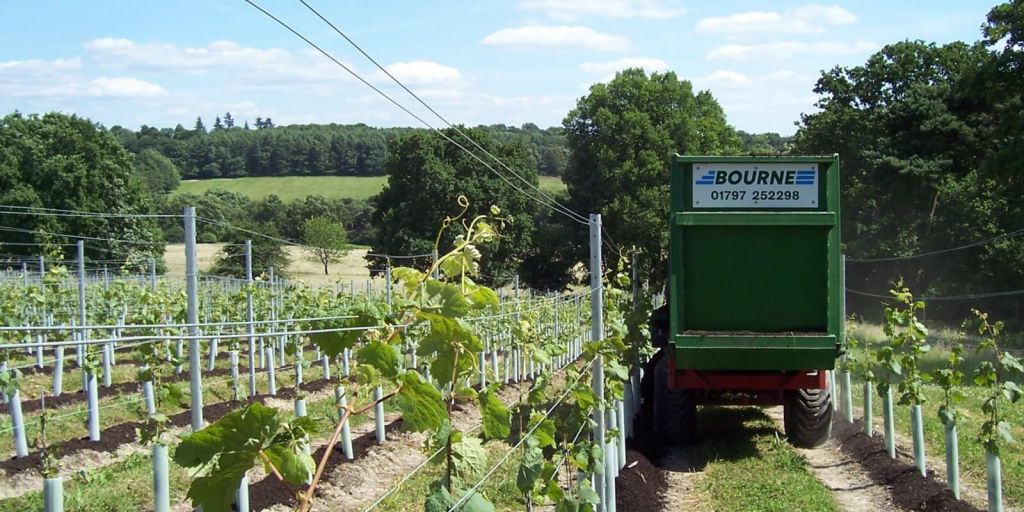Small bags in Sevenoaks

This is our new bagging unit, based in the Sevenoaks depot. At this time of year, it is used especially for 25-kg bags of cricket (Surrey) loam, but it can of course be used for any material going into small bags.
At the back of the picture, you can see a grey bag hanging in place under a small hopper. This is fed with material from a conveyor belt, which is located outside the store, behind the wall. To the right of the bag is a weighing unit which displays how much material has gone in the bag, to ensure the correct fill every time. Once the bag is full, it drops down on the conveyor belt below and is moved, upright, to the sealing unit to the left (the grey box on the wall). The bag is heat-sealed and then moves further to the left and onto the upwards conveyor, ready to be placed onto the waiting pallet. Once the pallet is full, it is moved outside with a forklift and then shrink-wrapped for stability and protection.
The unit can be operated by one or two people, allowing for up to 1,200 bags on 30 pallets to be produced daily.




